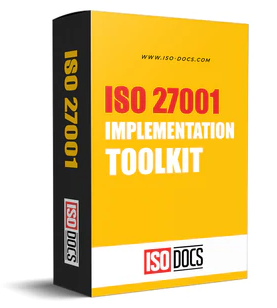Understand Climate-Related Requirements of Interested Parties
Introduction
Climate change is changing the current state at a rapid rate and it is an immediate transformational experience in organizations of all sizes and across all industries. In the modern world, regulatory enforcement, investors, customers, and community organizations understand that environmental risk exposes business to serious threats to business continuity, data security and brand reputation. The ISO 27001 standard of Information Security Management Systems (ISMS) integrates as well the climate-risk aspect in its framework directly by having organizations consider the needs and expectations of its interested parties in regard to climate-related risks.

An Increase In The Significance Of Climate Change To Information Security
The contemporary organization is less and less evaluated on the level of their environmental influence only, readiness to cope with natural disasters, manage climate related threats to their cyber and physical property. Data centres are vulnerable to floods and heatwaves, supply chains are under threat of interruption by extreme events and the regulatory environment is changing fast to require more transparency and action on climate risk. Against this background, the new ISO 27001 amendments require a forms-based approach to addressing climate-related requirements-not only, as before, those suggested by regulators, but also those indicated by all other interested parties.
Who Are The Interested Parties And What Are Their Climate- Related Requirements?
1. Regulatory Bodies/ Government Agencies- Expectation: Adherence to the laws that establish transparency to climate-related information, risk analysis on the environment and the inclusion of climate-related business continuity and information security as a requirement.
2. Customers and Clients- These expectations are that their data will be conserved against climate-based issues and service will be delivered even in the case of significant environmental upheavals.
3. Stockholders- Expectations: Risk management plans to evaluate both the financial and non-financial, climate threats alongside credible reporting of resilient assets and processes.
4. Employees- Safe, resilient workspaces and understanding of what to do in extreme weather or natural disasters related to key facilities and systems.
5. Suppliers And Partners- Expectations: Minimum standard of the requirements to fulfill the high climate risk requirements and to provide the continuity and security in shared data and processes.
6. The Local Communities and the General Public- Expectations: Transparency, ethical management of information in the cases of environmental emergency, and reduction of environmental impact on the organization.
Actions To Be Taken To Comprehend and Address Climate Related Needs
1. Identify all the relevant interested parties- Start with a mapping of all parties that either have influence over the information security decisions of your organization or are affected by such decisions. Update this list on a regular basis according to new regulatory, market, and social conditions.
2. Collect Explicit and Implicit Requirements
-
Explicit: Clear demands like the ones in laws, agreements, or public ESG policies.
- Implicit: Unstated business practice, industry customs or new social trends (e.g., the demand to reduce carbon footprint or to utilize the green data centers).
Utilize surveys, interviews, negotiations between suppliers and buyers, and consultation of stakeholders in order to identify exhaustive climate-oriented needs.
3. Break down and Prioritize Requirements- Record each requirement, examine its impact on business or economy and understand its applicability to your ISMS. Prioritize the compulsory ones and the ones that are high in risk in the event of not being met.
4. Include Requirements in childcare ISMS
-
Risk Assessment: Clearly consider climate threats such as floods, droughts, storms, spikes in temperature as you assess risks to information assets.
-
Business Continuity Planning: DR/BCP (Disaster Recovery/Business Continuity plans) should take into consideration the probable climate scenarios and reporting obligations to regulatory bodies/ events.
-
Selection of Controls: Initiate (or enhance) controls that protect against climate risks (e.g., geographical redundancy, off-premises back-ups, secure mobile working arrangements).
5. Train and Communicate- Train employees, suppliers, and partners on their duties and responsibility in responding to climate-related threats. Update the training to ensure it reflects changes in regulations and known risks on a regular basis.
6. Review Monitoring- Put in place a program to review your stakeholder analysis and the climate-related requirements identified. Use audits, management reviews, and stakeholder feedback in an ongoing process of improvement.
Best Practices In Handling Climate-related Stakeholder Requirements
1. Be Proactive: Keep up with the ever-changing legal, technological, eco-friendly terrain to predict emerging stakeholder demanding so that they are implemented before they are required.
2. Automate Tracking: Automatically monitor and alert to new or amended climate requirements using compliance management tools.
3. Align ESG and ISMS Governance: The need to collaborate between sustainability and information security executives results in stronger approaches and simplifies reporting.
4. Recorded Decisions: Document the manner in which each requirement has been identified, analyzed, accepted, or mitigated to aid audit transparency and readiness.
5. Engage the Board and Senior Leaders: Reputational and business risks make climate risk part of strategic planning, and ensure leadership understands the stakes.
Advantages of Climate-related Requirement Detection and Compliance
- Regulatory Compliance: Eliminate potential fines, sanctions and forced business closure.
- Resilience: Enhance the resilience of organizations to chronic and acute climate-related disruptions to information and operational systems.
- Market and Investor Confidence: Become more attractive as a business partner or investment target by communicating that hard work has gone into managing climate risk.
- Public Trust: Show social responsibility, build up your good image in the eyes of the social and media.
- Continuous Improvement: The process does not only give an external compliance but also internal efficiency, cost savings and sustainability.
Final Thoughts
Climate-related requirements of interested parties have moved to the forefront of effective and modern information security management according to ISO 27001. Organizations should now adopt a comprehensive, proactive process of mapping stakeholders, identifying clear and perceptual needs, and integrating all these needs into each of the layers of the ISMS. This is not only a form of compliance, audit preparation, and auditing bulk-up but also a way of developing a resilient, responsible, and trusted business that can survive the unprecedented environment of climate changes.


